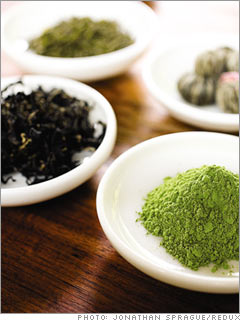Lee's father was from Yunnan province in China, widely described as the birthplace of tea, and Leong has been studying the more meditation-based Japanese tea ceremony of Chanoyu for 17 years. When a local research horticulturist at the Pacific Basin Agricultural Research Center of the USDA announced he was releasing tea plants to the public, Lee volunteered to help organize their distribution. In her great room Lee, who is also the president of the 100-member Hawaii Tea Society (hawaiiteasociety.org), serves us macadamia nut cookies and prepares the tea. In a clay pot, she briefly runs hot water through the tea leaves -"it allows the tea to have a moment and sigh" - which literally washes the tea, but in the Chinese ceremony, it symbolizes the need to pause and reflect before embarking on a task. Lee then refills the pot and steeps the leaves. She starts with green tea and decants the yellow-auburn tea into a clear glass vessel. She then pours it into our small aroma cups, which we in turn pour into a larger sip cup. Lee directs us to inhale the lingering scent from our aroma cups. The scent and taste are a surprise, a kind of fruity, grassy, fresh smell. We also try a black oolong tea with an earthy, milder taste.
The 60-minute experience costs us $25 each, and Lee has tea for sale at eight grams for $10 or one ounce for $30. We leave instead with one of Leong's porcelain jars - and a better appreciation of tea.
| |

